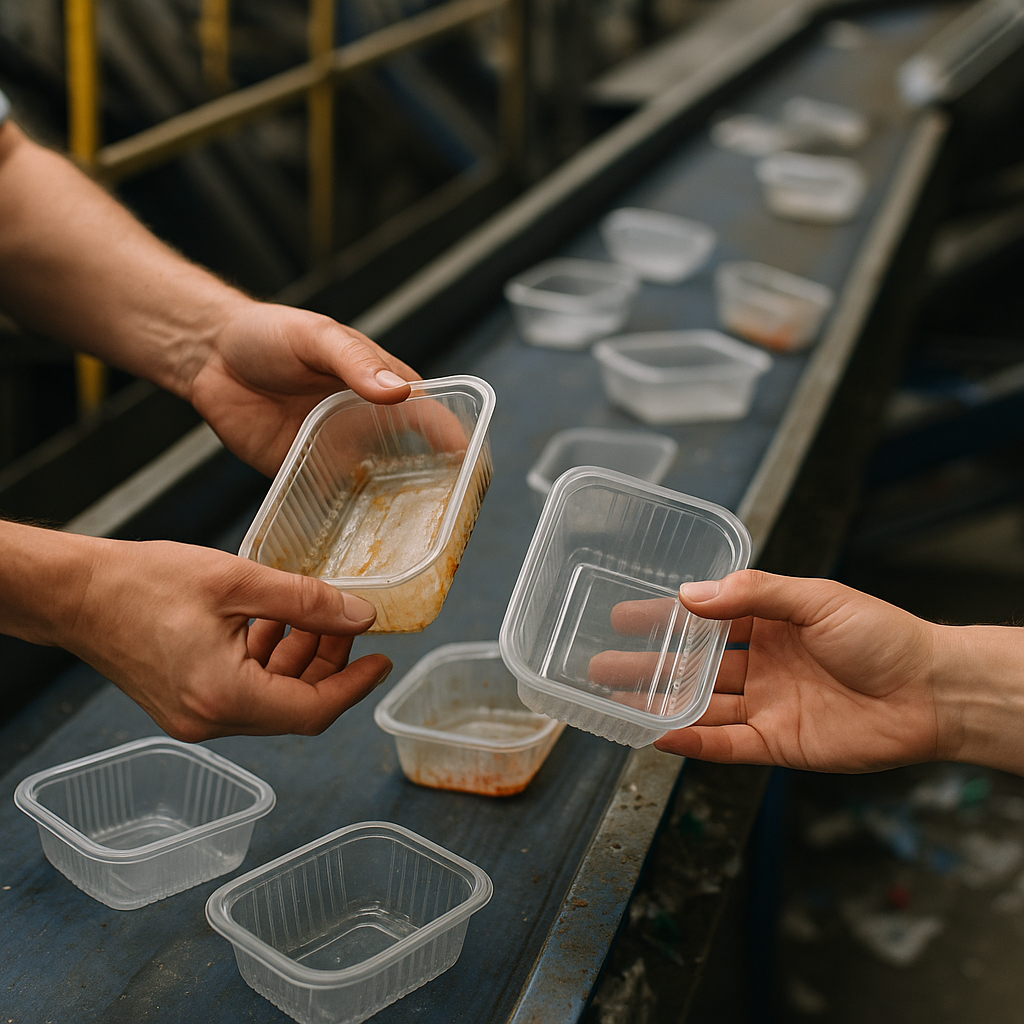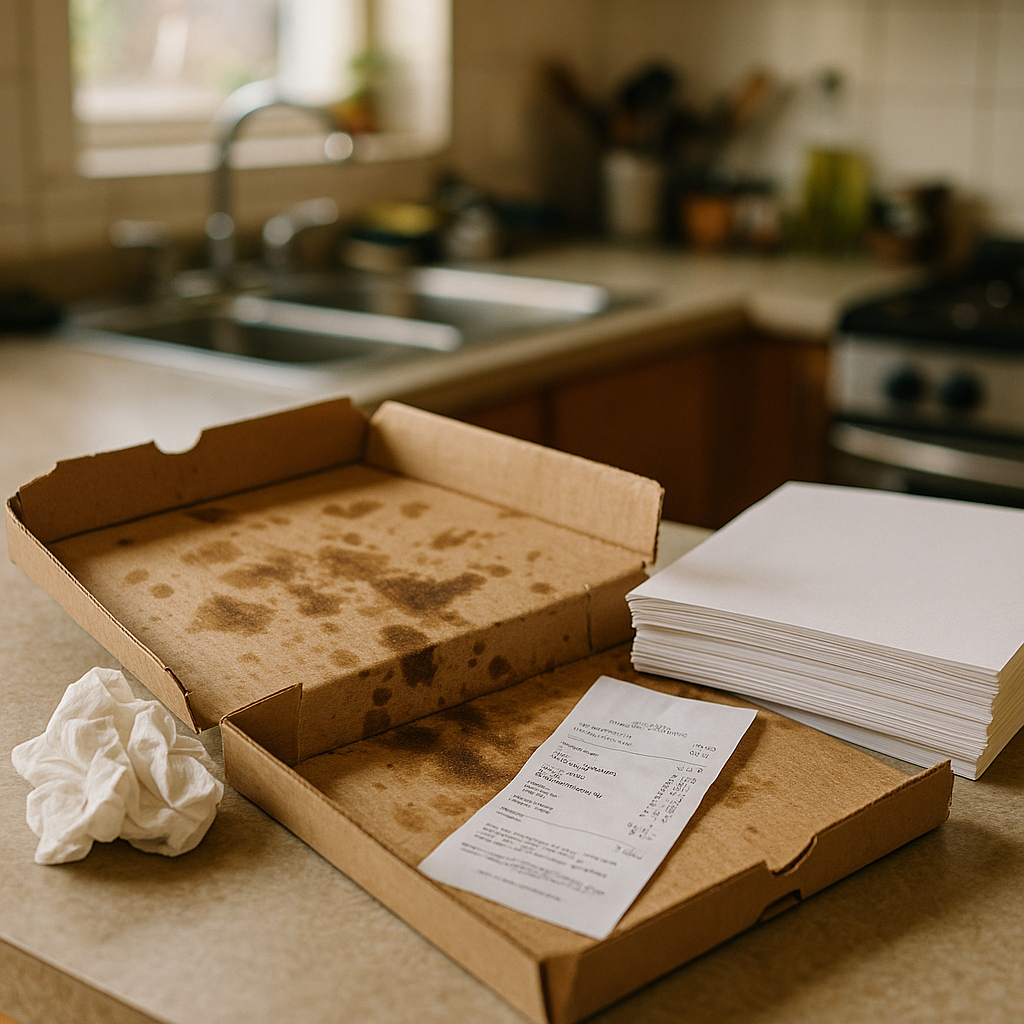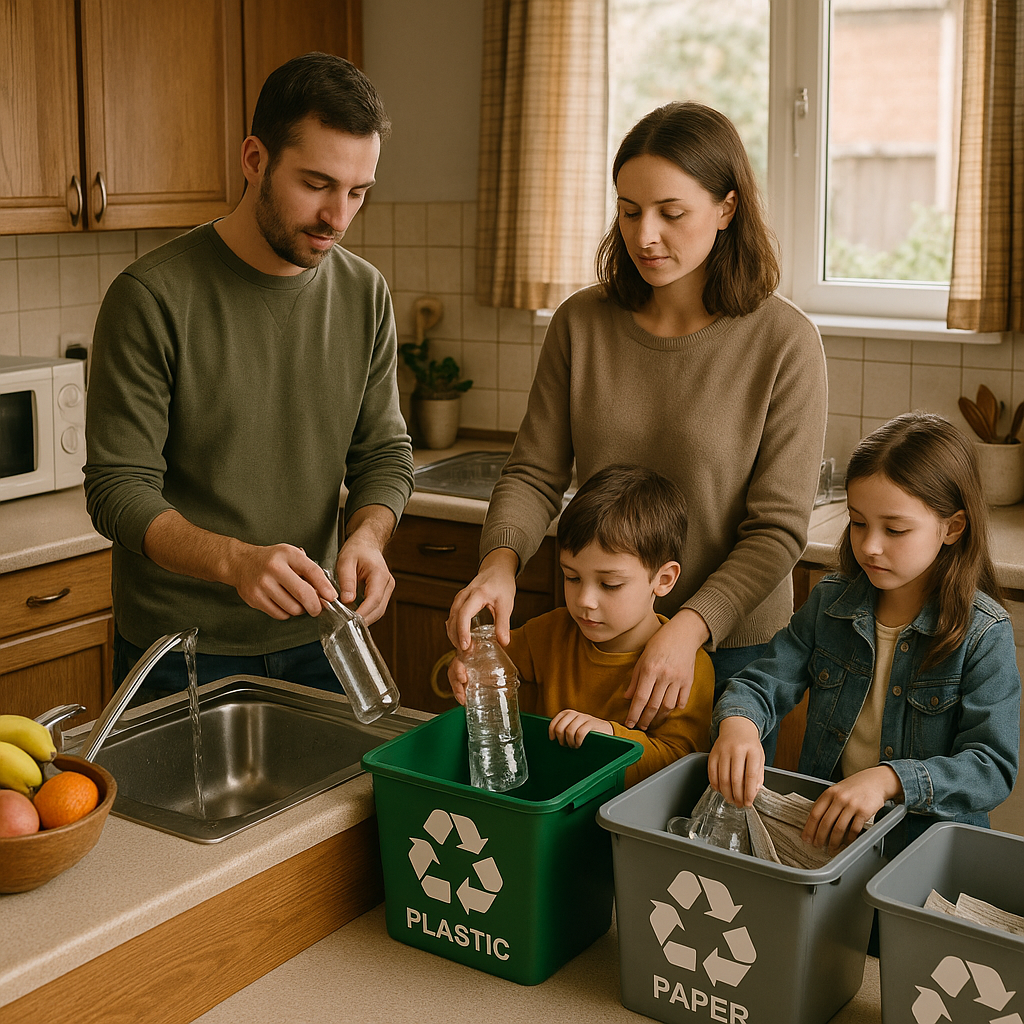5901 Botham Jean Blvd, Dallas, TX 75215
Common Items That Cannot Be Recycled: A Complete Guide to Avoid Wishcycling
August 27, 2025Did you know that 84% of people place items in recycling bins that cannot be processed? This widespread confusion significantly contaminates recycling streams, complicating effective waste management.
Many everyday items, such as single-use coffee cups, styrofoam, bubble wrap, and plastic bags, are not recyclable. These materials can contaminate entire batches of recyclables and damage processing equipment at recycling facilities.
When non-recyclable items enter the system, they create what experts call ‘wishcycling’—our well-meaning but misguided attempts to recycle items that cannot be processed. Research shows that nearly one-fifth of collected recycling ends up unusable due to contamination. Understanding which items cannot be recycled is the first step toward more sustainable waste management practices.
Why can’t certain plastics be recycled?

Despite efforts to recycle plastic waste, certain items frequently end up in landfills or incinerators instead of recycling facilities. This issue arises from both material composition and technical limitations in the recycling process.
Size and Shape Limitations
Plastic utensils and straws pose recycling challenges due to their small size. They often fall through sorting screens at recycling facilities, mix with other materials, or jam equipment. Their inconsistent shapes also hinder automated sorting systems.
Even when collected, these small plastic items are typically made from polypropylene (plastic #5) or polystyrene (plastic #6), which aren’t universally accepted in curbside recycling programs. This combination of size and material limitations makes items like plastic forks, knives, and straws poor candidates for recycling.
The Black Plastic Problem
Black plastic presents a unique recycling challenge that many consumers don’t realize. The carbon black pigment used to create black plastic absorbs the infrared light used by automated sorting equipment. When optical scanners at recycling facilities attempt to identify black plastic items, they simply can’t “see” them.
This technological limitation means that black plastic takeout containers, coffee lids, and packaging trays typically bypass sorting equipment and end up in landfills. What makes this particularly concerning is that black plastics may contain higher levels of potentially harmful chemicals, including heavy metals and flame retardants from recycled electronic waste.
Understanding Plastic Numbering
The recycling triangle with numbers 1-7 that appears on plastic products indicates the type of resin used. However, not all numbers are equal in terms of recycling:
- Plastics #1 (PET) and #2 (HDPE) are widely accepted in most recycling programs
- Plastic #4 (LDPE) is increasingly accepted but still limited in some areas
- Plastics #3 (PVC), #5 (PP), #6 (PS), and #7 (other/mixed) face significant recycling challenges
Many recycling facilities simply lack the capability to process plastics numbered 3-7, which include items like PVC pipes, medicine bottles, yogurt containers, and foam packaging. Economically, these materials often cost more to collect and process than the value of the recycled material.
| Plastic Type Code | Description | Recyclability Status |
|---|---|---|
| 1 – PET | Polyethylene Terephthalate | Widely recycled (e.g., beverage bottles) |
| 2 – HDPE | High-Density Polyethylene | Widely recycled (e.g., milk jugs) |
| 3 – PVC | Polyvinyl Chloride | Rarely accepted (e.g., piping) |
| 4 – LDPE | Low-Density Polyethylene | Sometimes recycled; specialist facilities (e.g., plastic bags) |
| 5 – PP | Polypropylene | Sometimes recycled (e.g., yogurt containers) |
| 6 – PS | Polystyrene | Rarely accepted (e.g., disposable cups) |
| 7 – Other | Miscellaneous Plastics | Rarely accepted; specialty facilities needed |
Composite and Multi-Layer Plastics
Food packaging that combines different plastic types or incorporates multiple materials creates recycling complications. Chip bags, granola wrappers, and juice pouches often use laminated layers of plastic and aluminum that cannot be separated in standard recycling processes.
These multi-material packages may be technically recyclable, but most facilities aren’t equipped to handle them. As a result, these hybrid materials typically become waste even when placed in recycling bins.
The recycling industry continues to develop new technologies to address these limitations, but knowing which plastics your local program accepts is currently the best way to ensure effective recycling. When in doubt, check with your local recycling provider about specific items before placing them in your bin.
What paper products should not go in the recycling bin?

While paper is generally one of the most recyclable materials, not all paper products can be processed through standard recycling systems. Knowing which items to keep out of your recycling bin helps prevent contamination and improves recycling efficiency.
Paper towels, napkins, and tissues
Used paper towels, napkins, and tissues cannot be recycled despite being made of paper. These products often have short paper fibers that have been recycled many times, making them unsuitable for further processing. Additionally, they are usually contaminated with food residue, grease, or bodily fluids, which can spoil batches of recyclable paper.
The best disposal option is to compost these items if they’re free from cleaning chemicals; otherwise, they should be placed in the trash. Consider switching to reusable cloth alternatives to reduce waste.
Thermal paper receipts
Most receipts are printed on thermal paper containing bisphenol-A (BPA) or similar chemicals, making them impossible to recycle through standard processes. If these receipts enter recycling, they can contaminate entire batches of paper.
These should be disposed of in regular trash. To reduce waste, choose digital receipts when possible or decline receipts for minor purchases.
Pizza boxes and food-contaminated paper
Pizza boxes are challenging due to grease and food residue. Cardboard is highly recyclable, but when it’s mixed with water during recycling, the oil from greasy boxes can contaminate the entire batch of materials.
The solution is to recycle the clean portions of the box while composting or discarding the greasy sections. Check your local recycling guidelines for specific instructions.
Waxed paper and parchment paper
Waxed and parchment paper cannot be recycled because the wax or silicone coating cannot be separated during recycling. These coatings are created to resist water, which the recycling process uses to break down paper fibers.
Food-soiled waxed or parchment paper can often be composted. Otherwise, dispose of these items in the trash.
Paper coffee cups and coated paper products
Paper coffee cups typically cannot be recycled because they are lined with a thin plastic film (usually polyethylene) that makes them waterproof and is not easily separated from the paper.
Using a reusable coffee mug is the best choice. Paper cups should be trashed unless your local facility accepts them.
Specialty paper products
Papers with metallic coatings, glitter, or velvet finishes usually can’t be recycled. These embellishments interfere with recycling and can contaminate other materials. Laminated paper products should also be excluded from recycling bins.
For gift wrap and greeting cards, use the “scrunch test.” If it stays crumpled, it’s likely recyclable. If it springs back, it probably contains plastic or metal elements and should go in the trash.
Shredded paper
Though recyclable, shredded paper poses challenges because the small pieces can slip through sorting equipment and contaminate other materials. Additionally, shredding shortens fibers, decreasing their value for recycling.
To recycle shredded paper, collect it in a paper bag, seal, and label it, “shredded paper,” before recycling. Follow local guidelines for better results.
| Non-recyclable Paper Product | Proper Disposal Method |
|---|---|
| Paper Towels, Napkins, Tissues | Compost if free from chemicals; otherwise, trash |
| Thermal Paper Receipts | Trash (due to BPA content) |
| Pizza Boxes (Grease-contaminated) | Compost greasy parts; recycle clean parts |
| Waxed and Parchment Paper | Trash or compost (if food-soiled) |
| Paper Coffee Cups | Trash (due to plastic lining) |
| Specialty Paper Products (with metallic coatings, glitter, etc.) | Trash |
| Shredded Paper | Place in a paper bag, label, and recycle; follow local guidelines |
Alternative disposal options
If paper products can’t be recycled, consider these alternatives:
- Composting: Non-recyclable paper products like napkins and tissues can often be composted if free from chemicals.
- Reuse: Gift bags, tissue paper, and other decorative papers can often be reused before disposal.
- Waste-to-energy: In some communities, non-recyclable papers may be used in waste-to-energy facilities instead of landfills.
By properly sorting paper products and keeping contaminants out of recycling bins, you ensure recyclable materials are efficiently processed into new products. This supports the circular economy and reduces landfill waste.
How can we improve our recycling habits?

Transforming our recycling habits requires both knowledge and commitment. Education is the foundation of effective recycling. Learning your local recycling guidelines is essential, as requirements vary significantly between municipalities. What’s recyclable in one city may be landfill-bound in another. A few minutes spent reviewing your community’s specific rules can dramatically improve your recycling impact.
Contamination is a major challenge in recycling systems nationwide. Placing non-recyclable items in recycling bins—hoping they’ll somehow be processed, a practice known as “wishcycling”—can contaminate entire loads of otherwise recyclable materials. According to recent studies, about 25% of recyclables end up in landfills due to contamination issues. Remember the mantra: when in doubt, throw it out.
For immediate impact, focus on the basics. Ensure containers are clean, empty, and dry before recycling. Food residue is a major contaminant, rendering otherwise recyclable materials useless. Avoid placing plastic bags in curbside bins, as they jam sorting equipment and disrupt the recycling process. Also, items smaller than a credit card generally can’t be recycled through most residential programs.
For efficient waste management and expert recycling solutions, contact Okon Recycling at 214-717-4083. Our team can help you develop effective recycling strategies that benefit both your organization and the environment.
